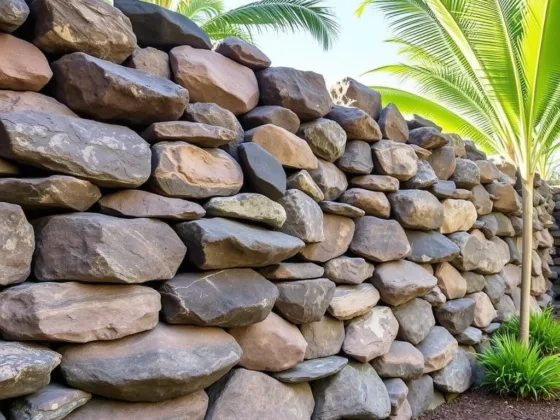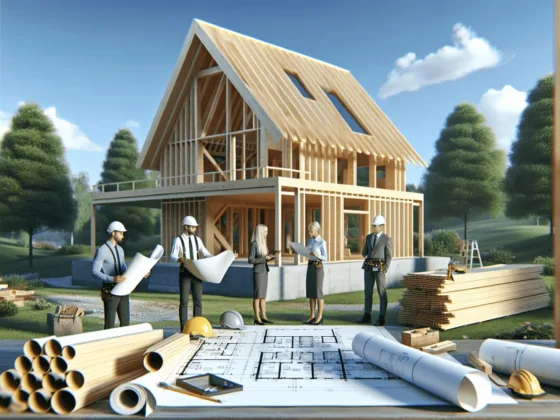Table of Contents Show
The right outdoor lighting fixtures play a vital role in making your home’s exterior presentable. Especially when the flowers bloom in the spring or summer, these exterior lights will add to the aesthetics of your house, if placed strategically.
Moreover, it also adds to the overall curb appeal of your home. However, there are so many styles and designs of exterior lighting that it may get overwhelming to decide.

Hence, in this article, we’ve enumerated a list of essential factors to consider while choosing outdoor lighting that perfectly fits your home’s exterior.
Read Also:
1. Types of Outdoor Lightings
Depending on your creativity, you can use lightings to create any kind of effect. However, if you’re clueless, then here are some of the types of outdoor lights:
Canopy
As the name suggests, it acts as a canopy and reflects light down on flowering beds or pots. It’s mounted on the ground and has a height of about 15 to 25 inches.
It can also be spread out in the landscape of your house as pathway markers.
Since their styles are on display, hence clear or frosted glass can be used to either focus or diffuse the light.
Diffused lights will reduce the glare and illuminate a wider area. Moreover, these lights are designed to be durable and withstand harsh weather.
Wash
For a soft and diffused light, a wash style is perfect. The scattered light will bring the landscape together. It sets the stage for ambience by applying different wash light techniques.
It’ll then wholly change the dark coven-like background to a more visually appealing exterior.
Wash light blends out in the background without being too obscure. Here are three different techniques that could be used with wash lighting:
Architectural Wash Lighting:
Wash lights are used to tie up the outdoor architectural components. It means it can be used for lighting the trees, walls, and pillars. It can be either used to add texture or add depth to the surrounding.
LED lamps are preferred for their brightness and beam spread. Moreover, LED lamps also come in different beam angles, to decide the “wideness” of the beam, according to your home structure and exterior.
Moreover, the wattage determines the “diffuseness” or “brightness” aspects of the beam.
If you don’t know which lamp to select for your outdoor, you must consult experts like Washington Outdoor Lighting.
Japanese Maple and Shrub Wash Light:
Lighting is all about balancing between composition, texture, and by utilizing the minute details of your landscape.
Japanese maple and shrub wash light have a transitional effect that helps soften the rough aspects of your surroundings, such as rocks, or shrubs.
Hence, it helps in creating a perfect balance. Usually, lighting either focuses on a centrepiece or one aspect of your landscape.
With Japanese maple and shrub wash, you can spread the light softly. It helps in creating a much more visually appealing feature.
Downlighting:
Downlighting mimics the diffused light of moonlight. It’s perfect for flagstone pathways, water features, and other garden accessories.
It creates a sophisticated, diffused, and soft ambient light that captures the decorations without being too bold.
For more info, check out this video:
Bullet
Bullet lights project a narrow, intense beam. It’s suitable for precise lighting on trees, garden accessors or tree trunks. It’s also commonly used for security purposes.
The beam provides a very bold and defined accent light. Hence the light won’t be able to wash out in the landscape.
Well
Well light is also commonly known as inground lights. These lights are installed on the grounds. With these lights, you can increase the sophistication of your landscape of architectural components of your exterior.
It’s more commonly known to add “drama” to the atmosphere as it is used to light the whole tree or a wall. When mixed with other lights, you can balance the dramatic silhouettes and create a softer look since it can be quite bright.
Moreover, with inground lights, it’s best to go for LED options since they have sharp colours at different temperatures.
Hence, making it suitable for dark backdrops. It may also last for long hours, making it ideal for security around the driveaway area.
Spotlights or Floodlights
Depending on the spread of the beam, it can either be a spotlight or floodlight. Spotlights have an intense beam; consequently its best for projecting light directly on an object.
It typically has a 45-degree beam; hence this narrow-angle makes it perfect for staging display items.
Floodlights have a 120 degrees beam, which makes it perfect to be projected on driveways for safety and visibility.
2. Different Ways to Light a Landscape
Lights can be used both for security and adding style. However, there are different lighting techniques and ways to place these lights. Each technique creates a unique ambience and outlook.
However, it can be quite challenging to decide which lighting style suits your landscape. Whether you need a high-power light or dim washed light. However, there are plays you can play with lights:
Uplighting:
When you have dark passages, stairs, deck, and porch, then it’s best to install step lights to illuminate the area.
Moreover, with stone walls, decorated areas, or entertainment areas, uplighting can produce a soft washed effect to create a sophisticated ambience.
It’s preferred to use well lights and spotlights in this case.
Shadowing:
When your landscape has dramatic shapes such as a pond, fountain, or rocks for decorations, then it’s best to consider shadowing.
Shadowing will aim the light at the item and create a dramatic shadow.
However, it can also be used to create a softer look. For shadowing spotlights, floodlights and wall lights work best.
Silhouetting:
Silhouettes are used to create dramatic shapes to add texture in your landscape. In this method, the light itself isn’t visible; just the beam is projected on an item, to create shapes through its shadows.
For this technique, spotlights and well lights work the best.
Moonlighting:
If you have large trees and want to create a dramatic effect using the branches; hence moonlighting is the best technique. It places to light up in the tree that beams downwards.
It creates a wonderful result when a tree has its branches spread out; for this method, spotlights work the best.
Grazing:
If you have a landscape that has many textured architectural components, then grazing will add to the aesthetic at night. It works by placing close to the surface, such a stone wall.
When the light illuminates, it creates a dramatic effect, and the shadow resulted in the texture. The idea behind this method is to take advantage of different textures. It adds a sophisticated and upscale look as it’s often used commercially.
3. Lighting Coverage
There are three main types of lighting coverage, and these are the following:
- Ambient Light Coverage: This creates a pleasant ambience, making a light level space that’s best suited for decks or yards where you’ll be entertaining guests.
- Task Lighting Coverage: In the task lighting goal, you create enough light for security purposes such as in the driveaway or very dark corners of your home.
- Accent Light Coverage: It’s only to add the element of décor and reinforces style.
Hence, first, you need to understand your space, and it’s required. A swimming pool would require a different light setting than your front yard.
First, you should mark the areas that need lighting and for what purpose. Then, decide which space needs more illumination than the others.
Some of the space examples are:
- Pathways
- Swimming pools
- Security areas
- Deck
- Porch
- Back yard
- Garden
- Driveways
- Patio
- Standout trees
4. Technical Aspects of Lighting
LED light is quite popular as it is long-lasting. However, other factors highly determine how you illuminate the area.
As mentioned, the colour, brightness, dimness, beam angle, and temperature are all important factors determining the outcome of your lighting.
Moreover, LED lighting has a low operating cost; hence it makes it quite cost-effective. Furthermore, LEDs are becoming more advanced, so you can take advantage of the new features. For example, LEDs now have adjustable beams.
You can now make your LED into a spotlight with 45 beam angles or a floodlight with 120 beam angles. Moreover, colour temperature is a very underrated factor that determines the outlook of your lighting.
LEDs come in different colour temperatures. Hence, it’s best to choose an LED that’s compatible with your exterior’s colour scheme. It’s recommended to use warmer colours on brownstone walls, sidings, or oak trees that lie in the same colour family.
And use white cooler colours for a fresh colour palette to match with pine trees or an exterior that’s dark grey.
Very crisp whites that fall in the range of 4,000 K to 5,000 K of LED colour temperature are recommended for commercial areas. However, here are some other technical tips to help you with outdoor lighting:
- Clean your lights to keep debris away from the surface, so it doesn’t overheat.
- Replace burnt bulbs immediately, so other bulbs are not affected.
- Fixtures such as brass, stainless steel, or copper shine for a long time; hence, it should be used instead of other fabricated materials.
- It’s always recommended to hire a professional for accent light coverage since they can see your landscape and know which kind of light can add drama.

Bottomline
Depending on your coverage need, outdoor lighting can either be used for security or style. There are different lights and lighting techniques to achieve a specific purpose, whether it is dim and diffused lighting that blends with the environment or bold textural effects.
Each lighting technique requires a unique type of LED or light bulb. Therefore, you need to research and plan out the kind of lighting that will go best with your home’s exterior design.









